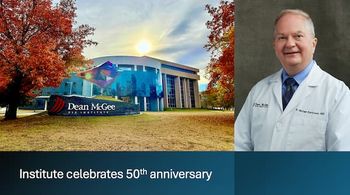
Supplements: Healing, visual outcomes with PRK
Omega-3 fatty acid supplementation results in substantially faster healing when used as an adjunctive therapy before and after PRK. The cornea re-epithelialized faster, the vision recovered faster, and the tear break-up time improved in patients randomly assigned to omega-3 fatty acid supplementation, according to Nikki Heidi Ong, MD.
San Diego-Omega-3 fatty acid supplementation results in substantially faster healing when used as an adjunctive therapy before and after PRK. The cornea re-epithelialized faster, the vision recovered faster, and the tear break-up time improved in patients randomly assigned to omega-3 fatty acid supplementation, according to Nikki Heidi Ong, MD.
“In PRK, the corneal epithelium is removed and discarded, allowing the cells to regenerate after the surgery,” said Dr. Ong, a Cornea, External Diseases and Refractive Surgery International Fellow at University of California San Diego Department of Ophthalmology, Shiley Eye Center.
“Although . . . PRK surgery . . . does not involve a knife, a microkeratome, or a cutting laser, . . . patients experience more pain, longer healing period, slow visual acuity recovery, and development of dry eye,” she added.
An understanding of the association between inflammation and the fatty acid pathways led Dr. Ong and colleagues to administer a natural anti-inflammatory agent to patients before and after PRK. The goal of the study was to determine if omega-3 supplements had a clinically relevant effect on corneal re-epithelialization, tear break-up time, and visual outcomes postoperatively.
The authors conducted a prospective, randomized, controlled trial of omega-3 fatty acids that included healthy patients (ages 18 to 40 years) with myopia that ranged from –1 to –6 D; 18 eyes were randomly assigned to treatment, and 18 eyes served as controls. The patients took one capsule of omega-3 fatty acids three times daily for 2 weeks before surgery and 1 month after surgery, and they were followed up for 6 months. At examination, the investigators recorded the visual acuity, tear break-up time, and corneal defects. Photographs were also taken at each assessment from days 0 to 5.
Dr. Ong, who is a Cornea, External Diseases and Refractive Surgery International Fellow at University of California San Diego Department of Ophthalmology, Shiley Eye Center, said that the eyes of patients who received omega-3 fatty acid supplementation had significantly (p = 0.029) faster healing from day 2 to day 4 compared with the control eyes.
“The eyes in the omega-3 group healed [at a] . . . mean of 1.12% per hour compared [with] the control group, in which the . . . mean was 0.8% per hour,” she said. “This difference was significant (p < 0.001).”
By day 3, the eyes in the treatment group were 16 times more likely to heal faster than the control eyes, with 100% healing by day 6. This also was significant (p < 0.001). She also showed that the treatment eyes had a longer mean tear break-up time of 9.65 seconds compared with the control eyes in which the mean tear film break-up time was 5.57 seconds (p < 0.001).
Visual acuity in the treated eyes recovered significantly faster than in the control eyes.
“One month after surgery, the visual acuity in the treatment eyes reached almost 20/20 vision. This was in contrast to the control eyes that reached 20/25 3 months postoperatively.
“The patients who received omega-3 supplements [had significantly faster healing] with improved tear break-up time [compared with] those patients not receiving omega-3 supplements. This may improve surgical outcomes by promoting wound healing, stabilizing tear film, and improving visual acuity recovery. Based on these findings, our institution will use omega-3 supplements as a standard treatment for all of our PRK patients,” Dr. Ong concluded.
Editor’s Note: Dr. Ong has no financial interest in the subject matter.
For more articles in this issue of Ophthalmology Times eReport,
Newsletter
Don’t miss out—get Ophthalmology Times updates on the latest clinical advancements and expert interviews, straight to your inbox.


















































.png)


